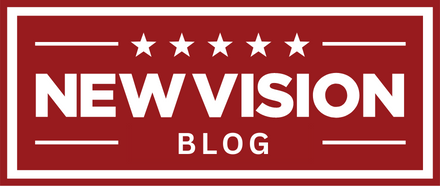Apple continues to launch incredible products every year, including new iterations of iPhones, iPads, Macs, and others. However, several Apple products are also killed each year silently. So, here is a list of all the Apple products discontinued until 2024.
When new variants of products are launched, Apple is left with no other option but to discontinue the existing one. This helps encourage users to look for newer options and boost their sales. If Apple doesn’t discontinue older products, they’ll have to continue producing them, but there will be no customers due to outdated tech.

All Discontinued Apple Products As Of 2024:
Here is a year-wise list of all Apple products discontinued thus far. Apple continues to end the production and support of several products every year. This is to promote the production, sales, and adoption of newly launched items.

If you have been interested in what products Apple discontinued this far, want to know which products were discontinued in which year, or have a tour down the nostalgia lane, you’ll find this list very useful.
2022:
In 2022, Apple discontinued four products, including some amazing ones. The classic iPod Touch was among them, halted after two decades. Here is a list of products that Apple discontinued in 2022:
- iPhone SE (2nd Generation):
Apple introduced the third generation of the iPhone, which meant the end of the iPhone SE 2nd Generation production. The SE Gen 2 shared the dimensions and form factor of the iPhone 8 and used the hardware pieces of the iPhone 11 series.

Launched: 2020
- iPod Touch (7th Generation):
Apple finally wrote the eulogy for iPod Touch (Gen 7) in May, and it was removed from Apple’s website in June 2022. The newly launched iOS 16 is not compatible with any iPod Touch models. Hence, the product became incompatible with the latest software series.

iPod was originally launched in October 2001 and was among the most iconic Apple products. However, the end was inevitable as a wide range of Apple products that play music are available these days. Thus, the iPod became of no use.
Launched: 2019
- Apple Watch Series 3 & Edition Line:
Apple also discontinued the Watch Series 3, which boasted a dual-core S3 processor. It was the first Apple Watch to have cellular connectivity using an eSIM.

The company introduced the all-new Apple Watch Ultra with a titanium casing. With this, they ended the production and support for the Apple Watch Edition Line. The Edition models have been available since the launch of the original Apple Watch in 2015.

Higher-end casing material options like gold, ceramic, and titanium set these models apart. The Apple Watch Ultra is the only variant offering a titanium casing.
Launched: 2017
- 27-Inch iMac:
The 27-inch iMac was also discontinued last year, with the Mac Studio and Studio Display launched in March. The iMac was the final model with an Intel processor before Apple adopted the powerful M series.

Now, the 24-inch iMac with the M1 chip is the only all-in-one desktop computer sold by Apple as iMac Pro was also discontinued previously.
Launched: 2020
- Apple TV HD:
Apple TV HD was first introduced in 2015. However, it was discontinued last year with the third-gen Apple TV 4K launch in October.

The former was priced at $149 before going away, but the newly launched variant is available at a reduced price of $129. Apple TV HD was the first variant to feature tvOS, an App Store, and a Siri-enabled remote.
Launched: 2015
2021
- iPhone XR
Apple iPhone XR was one of the highest-selling devices by the company due to being an affordable flagship at the time of its release. Unfortunately, it was discontinued in 2021, with the Mini series and new iterations of the SE series getting the “budget flagship” tag.

Launched:
- iPhone 12 Pro and 12 Pro Max
iPhone 12 Pro and 12 Pro Max were the first Apple smartphones with useful additions like 5G support, LiDAR sensor, and ProRaw. These were also the first devices to feature MagSafe wireless charging compatibility.

Launched: 2020
- Apple Watch Series 6
The Apple Watch Series 6 was upgraded with the new S6 processor that was around 20% faster than the previous lineups. It also introduced a brighter always-on display and an always-on altimeter.

Launched: 2020
- Apple TV 4K (First Generation)
Apple TV 4K Gen 1 was a digital media player that introduced support for 2160p output, HDR10, Dolby Vision, and Dolby Atmos.

Launched: 2017
- HomePod
HomePod was a smart speaker that featured integrated support for Siri and Apple Music.

Launched: 2018
2020
- iPhone 11 Pro and 11 Pro Max
iPhone 11 Pro/Pro Max was the first series of Apple smartphones featuring the iconic triple-lens rear camera system. The A13 Bionic chip powered them.

The iPhone 11 Pro was Apple’s first iPhone to feature a “Pro” designation previously used for other devices like the iPad and MacBook.
Launched: 2019
- Apple Watch Series 5
Apple Watch Series 5 introduced cool features like a compass and an always-on display. It also featured a low-power display driver support refresh rates as low as once per second.

Launched: 2019
- iPhone 8 and 8 Plus
The iPhone 8 and 8 Plus were among the most-selling Apple smartphones globally. They were similar to their predecessors but featured a glass back and the inclusion of inductive charging.

Launched: 2017
2019
- iPhone 7 and 7 Plus
iPhone 7 and 7 Plus series introduced new color options like matte back and jet black. They also introduced water and dust resistance and were involved in the controversial removal of the 3.5 mm headphone jack.

Launched: 2016
- iPhone XS and XS Max
iPhone XS and XS Max weren’t very successful due to XR getting the most spotlight. These smartphones introduced key features like dual-SIM support and filming with stereo audio.

Launched: 2018
- Apple Watch Series 4
Apple Watch Series 4 was introduced which major redesigns like the larger display with thinner bezels and rounded corners. It also had a slightly rounder and redesigned ceramic back with a thinner chassis.

Launched: 2018
2018
- iPhone 6 and 6 Plus
iPhone 6 and 6 Plus was the first Apple smartphone to support near-field communications-based mobile payments. They featured a larger 4.7-inch and 5.5-inch display, a faster processor, and upgraded cameras.

Launched: 2014
- iPhone 6S and 6S Plus
iPhone 6S and 6S Plus boasted strengthened aluminum alloy chassis with a new 12 MP rear camera. The camera was capable of recording up to 4K video at 30fps, and this was a first in the series. “Live Photos” was also introduced with these devices.

Launched: 2015
- Apple Watch Series 1
Apple Watch Series 1 was introduced with improved battery life and an aluminum casing.

Launched: 2016
- iPhone X
iPhone X was a revolutionary redesign that sported a glass, stainless-steel form factor and a bezel-less build. It was the first iPhone to feature an OLED screen, and the home button’s fingerprint sensor was replaced with a new authentication type called Face ID.

Launched: 2017
- iPhone SE (First Generation)
iPhone SE (1st generation) featured the same physical design and dimensions as iPhone 5S but an upgraded A9 SoC with a greater battery and a 12 MP rear camera.

Launched: 2018
- AirPort Express
AirPort Express was a Wi-Fi base station featuring audio output capability.

Launched: 2000
- AirPort Extreme
AirPort Extreme was a residential gateway that combined the functions of a router, network switch, wireless access point, and NAS.

Launched: 2003
- AirPort Time Capsule
AirPort Time Capsule was a wireless router having network-attached storage (NAS) and a residential gateway router.

Launched: 2008
2017
- iPod Shuffle
iPod Shuffle was the smallest model in Apple’s iPod series. It was also the first iPod to use flash memory.

Launched: 2005
- iPod Nano
iPod Nano was introduced as a replacement for the iPod Mini.

Launched: 2005
- Apple Watch Series 2
Apple Watch Series 2 introduced key upgrades like water resistance to 50 meters, a display twice brighter than the last iteration, and a GPS receiver.

Launched: 2016
- AirPower
AirPower was a tentative wireless charging mat that was never released. It was only announced and scheduled to launch in early 2018 but failed to make it to the market.

Launched: NA
2016
- iPhone 4S
iPhone 4S introduced an exclusive intelligent personal assistant known as “Siri.” The S in the name stood for Siri.

Launched: 2011
- iPhone 5S
iPhone 5S was an upgrade in the series featuring new color options and Siri support.

Launched: 2013
- iPhone 5C
iPhone 5C was introduced with a hard-coated polycarbonate shell instead of the aluminum case of the original iPhone 5. The C in the name stands for Color.

Launched: 2013
- Apple Watch
Apple Watch was the first smartwatch in the ecosystem. It could pair to the iPhone and features a built-in heart rate sensor.

Launched: 2015
2015
- Apple TV (First Generation)
Apple TV (1st generation) was introduced as a media player developed for a TV. It has a 40GB or 160GB capacity to store audio and video.

Launched: 2009
- Aperture
Aperture was an image organizer for the macOS operating system. It handled work like importing and organizing image files, applying corrective adjustments, and printing photographs.

Launched: 2005
- iPhoto
iPhoto was a digital photograph manipulation software application.

Launched: 2002
2014
- iPod Classic
iPod Classic was a portable media player featuring an LCD and hard drive for storage.

Launched: 2002
2013
- iPhone 4
iPhone 4 was the first major redesign in the iPhone series.

Launched: 2010
- iPhone 5
iPhone 5 was the last iPhone to be overseen by the late great Steve Jobs. It was also the first iPhone to be completely developed under the guidance of Tim Cook.

Launched: 2012
2012
- iPhone 3GS
iPhone 3GS was a significant upgrade offering better performance and a 3 MP camera. The S in the name stood for Speed.

Launched: 2009
- Apple TV 2nd Generation
Apple TV Gen 2 featured a great number of upgrades, including a custom version of iOS, a smaller form factor, and supported an output of up to 720p with HDMI.

Launched: 2010
- iDVD
iDVD was a DVD-authoring app for Mac OS. It allowed users to burn QuickTime movies, MP3 music, and digital photos to a DVD.

Launched: 2001
- iWeb
iWeb was a template-based WYSIWYG website creation tool. It allowed users to create websites and blogs and customize them with text, photos, and movies.

Launched: 2006
- iPod Socks
iPod Socks were probably the weirdest Apple products of all time. They were a set of multi-colored cotton knit socks to protect iPods from damage during travel.

Launched: 2004
- MobileMe
MobileMe was the originating factor behind iCloud. It was a subscription-based collection of online services and software by Apple Inc. Eventually, the services transitioned to the free iCloud.

Launched: 2004
2011
- Xserve
Xserve was a series of rack unit computers. They could be used for applications such as file servers, web servers, and even high-performance computing applications like clustering.

Launched: 2002
2010
- iPhone 3G
iPhone 3G, also known as iPhone 2, was the first upgrade to the original iPhone. It came with new hardware features like GPS, 3G data, and a tri-band. It was the first iPhone to feature the App Store.

Launched: 2008
2009
No Apple products were discontinued in 2009.
2008
- iPhone 1st Generation
iPhone (1st generation) was the historical beginning of the series led by the legendary Steve Jobs.

Launched: 2007
- iPod Touch 1st Generation
iPod Touch (1st generation) was a music player with a handheld gaming device. It was an iOS-based mobile device without cellular network capability.

Launched: 2007
2007
- AppleWorks
AppleWorks was an office suite by Apple. It featured a word processor, database, and spreadsheet.

Launched: 1984
2006
- PowerBook
PowerBook was a series of Macintosh laptop computers aimed at the professional market.

Launched: 1991
- iBook
iBook was a series of laptop computers developed for entry-level, consumer, and education markets, with lower specifications and prices than the PowerBook.

Launched: 1999
- eMac
eMac meant education Mac was an all-in-one Macintosh desktop computer featuring a white plastic case and a 17-inch CRT monitor. The eMac powered a Freescale PowerPC G4 processor and an Nvidia GeForce2 MX graphics card.

Launched: 2002
- iMac G5
iMac G5 was an all-in-one personal computer. It featured the classic square design and was the final iMac to use a PowerPC processor.

Launched: 2004
2004
- iMac G4
iMac G4 was an all-in-one personal computer featuring an LCD mounted on an adjustable arm above a hemisphere containing the computer. It was often called Lamp or Sunflower.

Launched: 2002
2003
- iMac G3
iMac G3, originally released as the iMac, was a lineup of personal computers. They were known for their iconic egg-shaped design and radiant plastic.

Launched: 1998
Frequently Asked Questions:
A: Discontinued Apple products are the devices or items that the company has stopped producing and ended support for. These products are not sold by Apple anymore, neither online nor offline.
A: Vintage Apple products are devices the company discontinued selling more than five and less than seven years ago. And Obsolete Apple products are devices that haven’t been sold for seven years, and the company won’t offer any repair services.
A: Discontinued Apple products are often available on used items like Facebook Marketplace, Craiglist, eBay, and Amazon. You can also find them locally via Peer-to-Peer deals.
A: Different Apple products have a different shelf life. Some are only sold for a few years before getting a new upgrade, while others remain in the market for around five years. Apple continues to launch a new iPhone lineup yearly, but the support for older models continues for up to seven years.
Final Words:
Apple continues to discontinue older products every year with the launch of new ones. The cycle will keep repeating as technology continues to advance. The fact that some of today’s most revolutionary products will be obsolete in the coming days is truly fascinating.
These were all the discontinued Apple products till now. Which among them was your favorite and why? Don’t forget to tell us in the comments section.
This is Saquib, a technology and social media expert with over 10 years of experience in the industry. With a passion for staying up-to-date on the latest developments and trends in the tech and social media world and as a writer, I have been creating informative and engaging content that is easy for readers to understand and enjoy, also published in several leading tech and social media publications and is a regular speaker at industry events. In addition to my writing and speaking engagements, I also work as a consultant, helping businesses grow with the ever-changing tech and social media niche.



![50 Most Beautiful Women In The World [Updated 2024] Most Beautiful Women in the World](https://www.newvisiontheatres.com/wp-content/uploads/2022/12/Most-Beautiful-Women-in-the-World-200x114.png)
![Where To Watch One Piece Movies Online? [Full List] Where To Watch One Piece Movies](https://www.newvisiontheatres.com/wp-content/uploads/2023/04/Where-To-Watch-One-Piece-Movies-200x114.png)
![Top 20 Social Media Platforms in 2023 [Most Popular] Top social media platform](https://www.newvisiontheatres.com/wp-content/uploads/2023/01/Top-Social-Media-Platforms-200x114.png)
